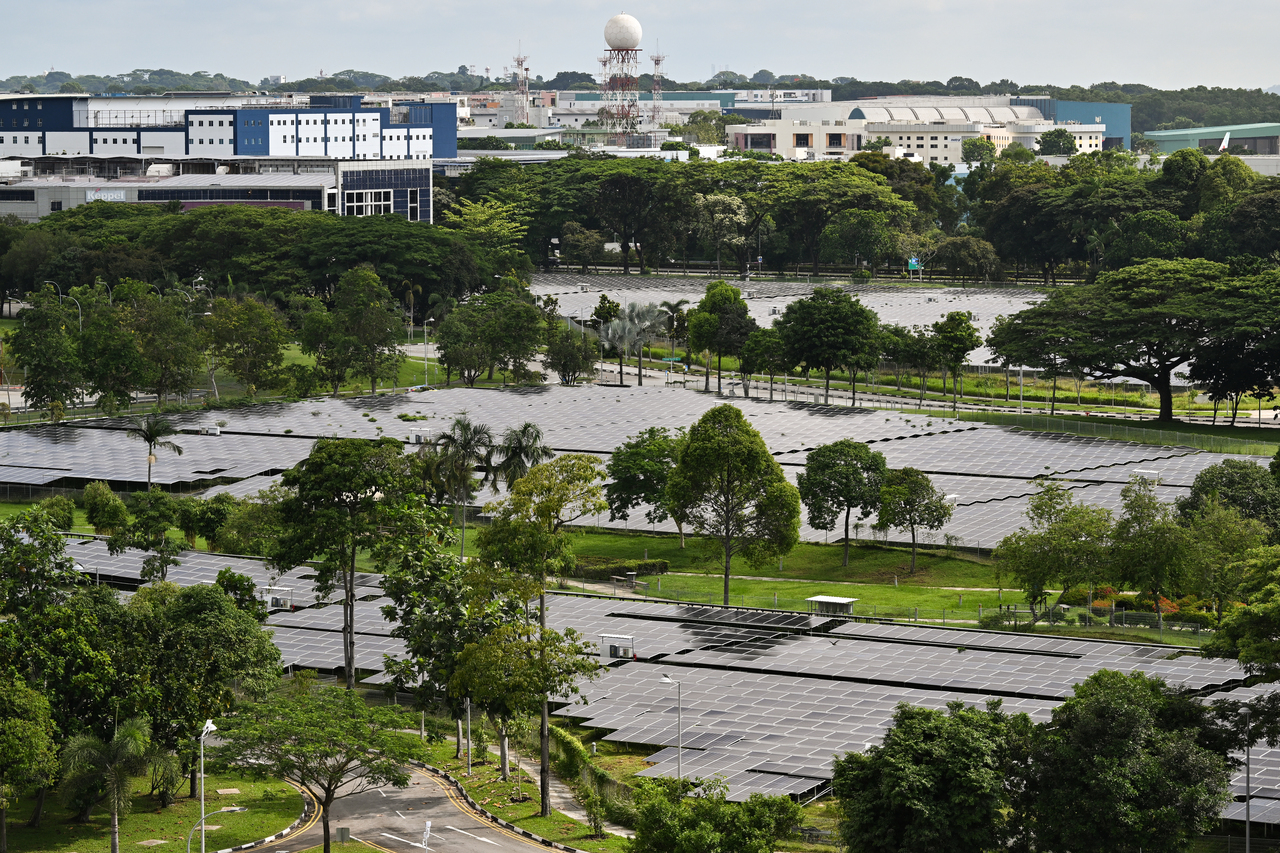80,000 more trees to be planted by 2030 to cool industrial estates: Tan Kiat How
Sign up now: Get ST's newsletters delivered to your inbox

Studies have also shown that intensified tree planting in Singapore can reduce midday temperatures in the surrounding area by up to 0.9 deg C.
ST PHOTO: LIM YAOHUI
Follow topic:
SINGAPORE - To reduce the effects of increasing temperatures, the government plans to boost the number of trees from 180,000 currently to 260,000 by 2030 in industrial estates, including Jurong Island, said Senior Minister of State for National Development Tan Kiat How on Tuesday (Aug 2).
He was responding to a question in Parliament posed by Nominated Member of Parliament Koh Lian Pin on an update on the progress and impact of the initiative to plant more trees in industrial estates to create a better work environment.
Studies have also shown that intensified tree planting in Singapore can reduce midday temperatures in the surrounding area by up to 0.9 deg C.
Data has shown that 2012 to 2021 was the warmest decade on record.
The Centre for Climate Research Singapore has projected that climate change would lead to average temperatures rising by 1.4 deg C to 4.6 deg C by the end of the century.
"We will continue planting more trees across Singapore under the OneMillionTrees movement, to mitigate the effects of climate change and provide Singaporeans with a more liveable and sustainable environment," he said.
The OneMillionTrees movement refers to the national initiative to plant one million trees from 2020 to 2030.
Mr Tan added that studies are currently being done in collaboration with institutes of higher learning to examine the different tree species and planting configurations that could maximise their cooling effects.
An islandwide network of sensors will also be deployed to monitor the cooling effects of Singapore's tree-planting efforts, he noted.
The data collected will support microclimatic research in Singapore and help the National Parks Board (NParks) develop better greening strategies to cool the nation.
To mitigate heat in people's homes and residential areas, the Housing Development Board (HDB) has embarked on various measures to optimise comfort for residents, said Mr Tan.
For example, HDB buildings are predominantly oriented north-south to reduce heat gain, he noted.
"For new towns and estates, HDB conducts environmental modelling to site new flats, design building facades, and refine building layouts to harness existing wind corridors and optimise wind flow," said Mr Tan.
HDB is also conducting a pilot study on cool paint which could absorb less heat and reduce the ambient temperature of HDB blocks for existing towns, he added.
Past trials have shown a reduction of ambient temperatures by up to 2 deg C, with the pilot expected to be completed in 2024, said Mr Tan.
Based on the study outcomes, HDB will consider extending the use of cool paint to more estates.
Ms Hany Soh (Marsiling-Yew Tee GRC) noted that HDB flats currently have full glass windows that emit a considerable amount of heat in the late afternoon, and asked if HDB would look into installing low-heat double-glazed windows for Build-to-Order flats, and flats eligible for the Home Improvement Programme.
In response, Mr Tan said that HDB would take these suggestions into consideration.

